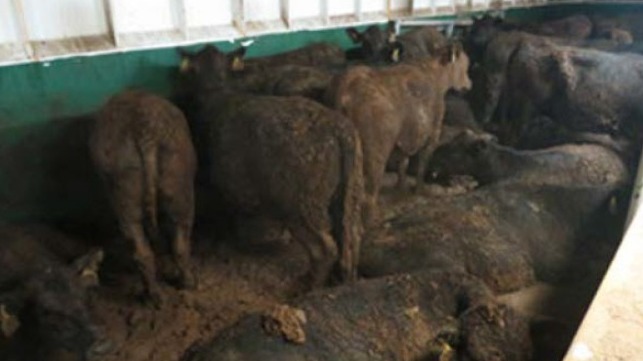Cattle Shipped to Asia Suffer Heat Stress, Lack of Fodder

Australia's live export debate has focused on high mortality shipments of sheep to the Middle East over the last year, but, says veterinary association Vets Against Live Export (VALE), cattle shipped from the southern state of Victoria to China are also suffering heat stress.
On May 31, 2018, Phoenix Exports exported cattle from Portland, Victoria, to China on the Dareen and had a high mortality voyage. 1.45 percent (46 out of 3,180) cattle died, with heat stress believed to be a major factor. The department required an independent observer for the next voyage from Portland to China. This voyage on the Yangtze Fortune also recorded a reportable mortality incident, with 33 cattle believed to have died.
12 months later, no investigation reports are available for either voyage. The independent observer report is also unavailable. VALE spokesperson Dr. Sue Foster said that AMSA inspected the Yangtze Fortune on its return and found problems. “AMSA ordered modifications to be made and stated that the vessel was not suited to voyages of more than 10 days. Then they examined the sister ship, the Yangtze Harmony, just before it left with cattle for China from Fremantle and found that its ventilation was not working. It was allowed to leave after this were rectified, but the independent observer found significant issues with the water troughs.”
Then in August 2018, the Gloucester Express had a 20-day voyage to China, with insufficient food loaded for the voyage, says Foster. And in November 2018, the Ocean Ute had a 22-day voyage to China that was only estimated to take 16 days. Fodder was loaded in accordance with the Australian Standards for the Export of Livestock (ASEL) to cover feeding of the loaded cattle for the exporter’s projected 16 day voyage, along with the required three day contingency.
Fodder was stored in silos and in some cattle pens on each deck. The daily fodder consumption could not be determined accurately because of fodder wastage and the storage / distribution system. Even though there were three feeds per day, the cattle consumed the available fodder quickly. A longer than expected voyage and competition for fodder resulted in reduced intake for cattle that were shy feeders or lame.
47 of the cattle on board died. The observer noted that one heifer broke its leg during loading and was euthanized. Additionally: “A significant number of cattle became lame during the voyage. The stockperson treated the lame cattle with varying success. Some of the lame cattle were unable to rise or seemed to develop Bovine Respiratory Disease.”
The observer's report notes the weather conditions experienced by the vessel, a converted container ship with seven enclosed decks. “Over the course of the voyage, the cattle were subject to a wide variation of weather and sea conditions. The weather during loading at Portland was wet and cold (temperature below 10 degrees Celsius). The temperature and humidity increased as the vessel travelled north. Humidity reached a maximum of 86 percent (in conjunction with 32 degrees Celsius) on Day 6... The temperatures and humidity remained similar (without any relief at night) until day 15 of the voyage. After day 15 of the voyage, the temperature decreased on a daily basis. By day 17, the temperature on the deck was around zero. The heat/humidity and subsequent cold temperatures appeared to adversely affect the health of some of the cattle, particularly those in poorer condition.”
Overall, the observer concluded: “The cattle were subject to adverse environmental conditions that included cold and wet conditions at loading, rough seas for approximately seven days in total, increased temperature and humidity in the tropics and conversely very cold conditions on arrival in China.
“The adverse vessel management factors include the availability of fodder, sloppy pen conditions whilst subject to humid tropical environmental conditions and reduction of availability of some pens because of fodder storage.”
Foster says voyage after voyage was allowed from southern Victoria to China despite the issues. “It appears that each voyage had some degree of heat stress in addition to other problems. And yet no veterinarian is required for these voyages.
“Historically, veterinarians have been required for voyages of longer than 10 days. The Department of Agriculture changed this once trade opened up to Vietnam and China. Veterinarians are not required on voyages to China, which can take just as long to complete as a voyage to the Middle East.
“With the sheep trade in tatters, one would hope that both the industry and the Department would be meticulous on cattle voyages. Instead it appears that they have dropped the ball,” said Foster.
